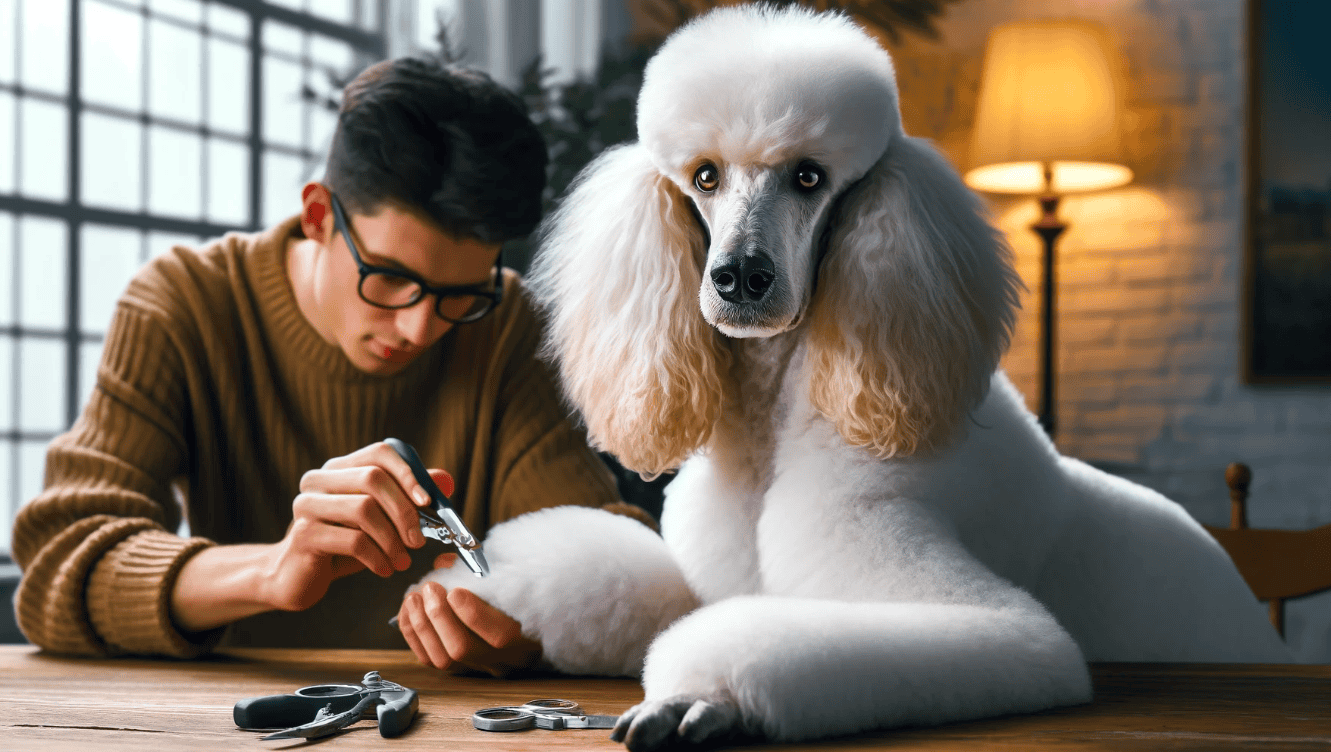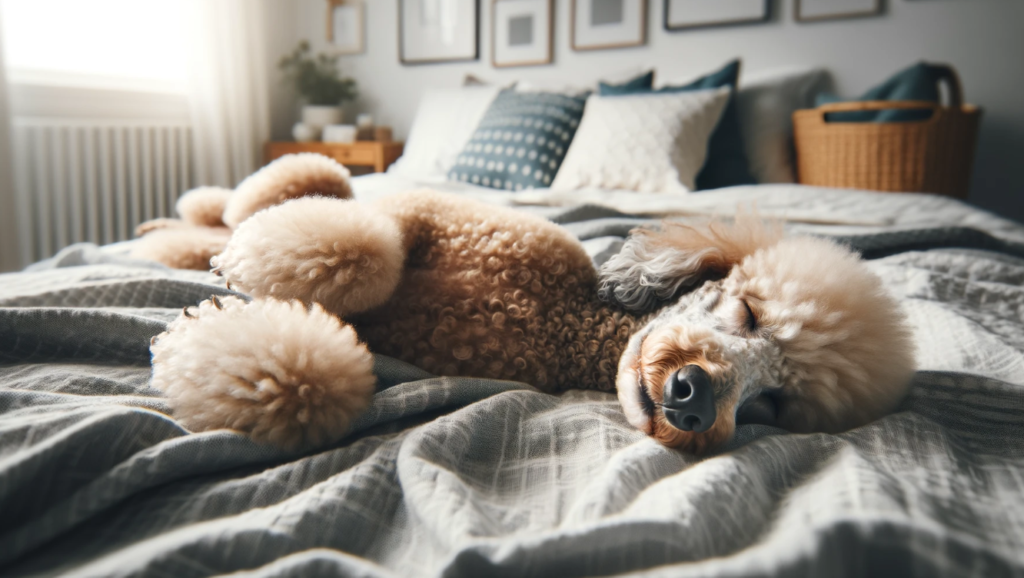We’ve all experienced that heart-dropping moment when, during a routine nail trim or an unexpected mishap, our beloved dog’s nail starts to bleed. Panic can set in as we fumble for solutions to stop the bleeding and ensure our furry friend’s well-being. Among the myriad of solutions and home remedies whispered through the corridors of pet lovers, one unusual method has emerged: super glue. But is this adhesive miracle truly safe for our pets?
In this article, we will delve deep into the anatomy of a dog’s nail, the reasons they bleed, and most importantly, assess the safety and efficacy of using super glue to treat these injuries. Our furry companions trust us to make the best decisions for them, and with this guide, you’ll be better equipped to do just that.

Why Do Dog Nails Bleed?
Dogs’ nails are quite different from ours. At first glance, they might seem like hard, resilient structures that shouldn’t bleed, but beneath their tough exterior lies a sensitive area called the quick. Understanding the anatomy and functions of a dog’s nail will provide clarity on why they bleed and how best to prevent and treat such occurrences.
Anatomy of a Dog’s Nail
Outer Shell: The visible part of a dog’s nail is made of keratin, a tough protein that’s also found in human nails and hair. This part doesn’t contain any nerves or blood vessels, which is why it doesn’t hurt your dog when you trim this portion.
The Quick: This is the core of the nail, rich in blood vessels and nerves. When looking at a dog’s nail, especially if it’s clear or white, you can often see the quick as a pinkish section inside. The quick provides nourishment to the nail, aiding in its growth.
Reasons for Bleeding
Accidental Cuts: The most common reason a dog’s nail bleeds is due to accidentally cutting into the quick during a nail trim. Even experienced groomers can sometimes make this mistake, especially if the dog moves suddenly.
Trauma: Dogs can snag their nails on various surfaces, leading to tears or breaks. Such injuries can expose or damage the quick, resulting in bleeding.
Nail Disorders: Conditions like fungal infections, tumors, or nail bed infections can weaken the nail, making it prone to breaking and bleeding.
Understanding the Pain
Since the quick is filled with nerves, any injury to it can be extremely painful for your dog. It’s similar to when we injure the area under our nails. Being aware of this can help dog owners approach nail injuries with greater empathy and urgency.
In summary, while a dog’s nail may appear hardy and durable, it houses a delicate structure inside that is prone to injury and bleeding. With knowledge and care, we can minimize the risk of nail injuries and ensure our dogs’ comfort and health.

Traditional Methods of Stopping Nail Bleeding
Dog nail injuries can be alarming for pet owners. The sight of blood, combined with the evident discomfort of your furry friend, demands immediate attention. Thankfully, over the years, several traditional methods have been developed to stop the bleeding effectively. Here, we’ll explore some of the most common techniques and products employed by dog owners and professionals alike.
1. Styptic Powder
- What is it?
- Styptic powder is a clotting agent, specifically designed to stop bleeding in minor cuts or wounds. Its primary ingredient, usually aluminum sulfate, causes blood vessels to constrict, aiding in swift coagulation.
- How to Use:
- Gently press a pinch of the powder against the bleeding nail. Hold for a few seconds to ensure the bleeding stops.
- Be aware that the application might cause a brief stinging sensation for your dog.
2. Cornstarch and Baking Soda Method
- Why Use it?
- In the absence of specialized products like styptic powder, many pet owners have turned to common kitchen ingredients like cornstarch or baking soda to stem the bleeding.
- How to Use:
- Dip the injured nail into a small mound of cornstarch or baking soda, ensuring the nail is well-coated.
- Press gently on the nail for a few seconds. If bleeding continues, repeat the process.
3. Using a Bar of Soap
- An Old-fashioned Remedy:
- A bar of soap can act as a plug, sealing off the bleeding site and allowing the blood to clot.
- How to Use:
- Soften the soap slightly with water. Then, press the injured nail directly into the bar, ensuring the nail penetrates the soap’s surface.
- Remove gently after a few seconds, ensuring a layer of soap remains over the nail. The soap will naturally fall off once the bleeding has stopped and the wound starts healing.
4. Importance of Calm and Swift Action
- Reacting swiftly and calmly can make a significant difference. While these methods are effective in stopping the bleeding, the overall well-being of your dog also depends on your demeanor.
- Offer comfort, use a soothing voice, and reward your pet afterward. This reassures them and reduces the stress associated with the injury.
While accidents can happen, being prepared with some traditional remedies can make a significant difference. Whether you opt for the tried-and-true styptic powder or choose a home-based remedy, the key is to act quickly and keep your pet’s comfort in mind.
Super Glue for Stopping Nail Bleeding
Over the years, as pet owners seek effective and immediate solutions for nail bleeding, super glue has emerged as a contentious option. Often heralded for its strong adhesive properties, super glue has found its way into pet care discussions. But is it a safe and reliable option? Let’s dive into the pros and cons.
1. The Origin of Super Glue
- History:
- Super glue, scientifically known as cyanoacrylate, was discovered in 1942 by Dr. Harry Coover. Initially developed as a material for clear plastic gun sights during World War II, it was later recognized for its powerful adhesive properties.
- Medical Uses:
- Interestingly, cyanoacrylate-based adhesives have been used in human medicine for wound closures, especially during surgeries as a suture alternative. This might give an impression of its potential applicability for pets.
2. Using Super Glue on Dog Nails
- Method of Application:
- Clean the nail thoroughly to remove any debris. Apply a tiny drop of super glue over the bleeding area, ensuring it covers the wound entirely.
- Hold the nail steady for a few seconds to allow the glue to dry and set.
- Immediate Efficacy:
- Due to its adhesive properties, super glue can act as a sealant, blocking the bleeding almost immediately.
3. Benefits and Potential Dangers
- Benefits:
- Fast-acting: Super glue can provide an immediate barrier, helping to halt bleeding quickly.
- Readily available: Many households have super glue on hand, making it a convenient option in emergencies.
- Dangers:
- Chemical Exposure: While some forms of cyanoacrylate are used medically, household super glue might contain additional chemicals that aren’t safe for pets.
- Skin Bonding: Super glue can adhere quickly to surfaces, including skin. This means there’s a risk of the glue sticking to your fingers or the dog’s fur, causing further distress.
- Irritation: Some dogs might experience irritation or a burning sensation upon application.
- Ingestion Risks: If a dog licks the area, they might ingest some of the adhesive, which is not intended for internal use.
While super glue can offer a quick solution in emergencies, it’s crucial to weigh the potential risks against the benefits. Always consider the specific situation, the health of your dog, and if possible, consult a veterinarian before using unconventional methods.

Is Super Glue Safe for Dogs?
When faced with the distress of seeing our beloved pets in pain, our first instinct is to seek an immediate remedy. Super glue, given its ubiquitous presence in many households and its reputation for quick fixes, can seem like a go-to solution. However, the real question is: Is it safe for our canine companions? Let’s explore the evidence.
1. Chemical Composition of Super Glue
- Main Ingredient:
- Super glue’s primary ingredient is cyanoacrylate, a strong adhesive that binds quickly to surfaces upon contact with moisture.
- Variants:
- Not all super glues are created equal. There are different types, including ethyl cyanoacrylate (commonly found in household super glues) and n-butyl cyanoacrylate (used in medical-grade glues). The type and purity can affect the safety profile of the glue.
2. Potential Risks for Dogs
- Skin and Fur Adhesion:
- One of the primary concerns with super glue is its propensity to bond quickly to skin and fur. This can cause distress to your pet and, in some cases, lead to minor injuries if removal is attempted forcibly.
- Toxicity:
- While cyanoacrylate itself has low toxicity, the additives in some commercial super glues might not be safe for pets. If ingested, these additives can cause gastrointestinal upset or more severe complications.
- Irritation:
- Some dogs may develop an allergic or irritant reaction to the glue, manifesting as redness, swelling, or discomfort at the application site.
3. Ingestion Concerns
- Curious Lickers:
- Dogs, by nature, tend to lick their wounds. If a dog licks the area where super glue was applied, they risk ingesting the substance, which can cause mouth and throat irritation, drooling, or even gastrointestinal blockages in large amounts.
- Chewing:
- If a dog manages to get hold of a super glue container and chews on it, there’s a risk of the glue expanding in the stomach upon contact with gastric fluids, potentially causing obstructions.
4. Expert and Veterinarian Opinions
- Diverse Views:
- While some veterinarians might consider the use of super glue in emergencies when no other options are available, many advise against its use due to the potential risks mentioned above.
- Professional Recommendations:
- Most experts recommend opting for products specifically designed for pets, like styptic powders or pencils, which have a proven safety profile.
While super glue can offer an immediate solution in certain situations, the potential risks often outweigh the benefits. It’s always best to prioritize safety over convenience, especially when it comes to our pets. Always consult with a veterinarian before using unconventional methods or products on your dog.
Safe Alternatives to Super Glue
While super glue might offer a quick fix in emergency situations, it’s essential to consider safer, pet-specific alternatives when dealing with dog nail bleeding. These methods have been tried and tested by many pet owners and veterinarians, ensuring they’re both effective and benign for your canine companion.
1. Styptic Pencils or Pads
- What Are They?
- Styptic pencils or pads contain antihemorrhagic agents, often aluminum sulfate, designed to quickly halt minor bleeding.
- Usage:
- Moisten the tip of the pencil and apply it to the bleeding area, or press a styptic pad against the wound. It might cause a brief stinging sensation, but it’s generally safe and efficient.
2. DIY Solutions
- Cornstarch or Baking Soda:
- As mentioned earlier, pressing the bleeding nail into a small pile of cornstarch or baking soda can help stop the bleeding.
- Bar of Soap:
- A slightly moistened bar of soap can act as a sealant when the nail is pressed into it.
3. Cold Compress
- Immediate Relief:
- Applying a cold compress or an ice pack wrapped in a cloth to the injured nail can help constrict the blood vessels, reducing bleeding. This method can also provide some relief from pain.
4. Over-the-Counter Gel or Liquid Bandage
- Protective Barrier:
- These products can create a protective layer over the wound, preventing dirt and debris from entering and giving the injury time to heal. Ensure that any product used is safe for pets.
5. Professional Veterinary Products
- Consult Your Vet:
While it’s essential to have quick solutions on hand for nail injuries, it’s even more crucial to ensure that these methods are safe for our pets. Always prioritize products and techniques designed specifically for animal care, and when in doubt, don’t hesitate to consult with a veterinarian.

Preventing Dog Nail Injuries
While knowing how to treat dog nail injuries is crucial, prevention is always the best approach. Ensuring that your dog’s nails are well-maintained and taking some precautionary steps can significantly reduce the chances of nail injuries. Here’s how you can effectively prevent these unfortunate incidents.
1. Regular Nail Trimming
- Routine Care:
- Regularly trimming your dog’s nails prevents them from becoming overly long. Longer nails are more prone to snagging, tearing, or breaking.
- Tools:
- Invest in good-quality nail clippers or grinders designed specifically for dogs. Sharp and well-maintained tools make clean cuts, reducing the risk of injury.
- Technique:
- Familiarize yourself with the anatomy of your dog’s nail. Avoid cutting into the quick by making several smaller trims rather than one deep cut.
2. Proper Handling and Restraint
- Stay Calm:
- Dogs can pick up on their owner’s emotions. By staying calm and reassuring, you can keep your dog relaxed during the nail trimming process.
- Secure Positioning:
- Use a non-slip surface and, if necessary, get someone to help hold your dog gently but securely. This will reduce sudden movements that could lead to accidental nicks.
3. Regular Paw Checks
- Inspection:
- Regularly inspect your dog’s paws for any signs of injury, cracks, fungal infections, or other issues that can weaken the nails and make them more prone to injury.
- Cleaning:
- Keeping the paws clean can prevent infections and ensure any minor injuries are noticed and treated promptly.
4. Appropriate Play and Exercise
- Safe Environment:
- Ensure that your dog’s play area is free from sharp objects or rough surfaces that might cause nail injuries.
- Outdoor Activities:
- When walking or hiking, be mindful of terrains like rocky areas or places with debris that can be hazardous to your dog’s nails.
5. Protective Footwear
- Dog Shoes or Boots:
- For dogs who frequently walk on rough or challenging terrains, protective footwear can prevent nail injuries and also protect the pads of their feet.
6. Regular Vet Visits
- Professional Insight:
- Regular check-ups with a veterinarian can catch potential issues early on. If you’re unsure about trimming your dog’s nails yourself, many vet clinics offer this as a service.
7. Training and Familiarization
- Start Early:
- Introduce puppies to nail trimming early on, so they become accustomed to the process. Use treats and positive reinforcement to make the experience positive.
- Practice:
- If you or your dog is anxious about nail trimming, practice handling their paws without cutting to build trust.
While accidents can happen, a proactive approach towards your dog’s nail care can significantly reduce the risk of injuries. Regular maintenance, combined with a safe environment and proper handling techniques, ensures that your dog’s paws remain in top condition.

Conclusion
The health and well-being of our furry companions hold a special place in our hearts. While the idea of using super glue for nail injuries may seem tempting due to its immediate effects, it’s essential to prioritize the long-term safety of our pets over short-lived convenience. As we’ve explored, there are several safer, veterinarian-approved methods to address nail injuries when they arise.
But beyond treatment, the essence of pet care lies in prevention. Regular nail maintenance, safe environments for play, and routine vet check-ups are cornerstones in ensuring our pets’ paws remain healthy. Every dog owner should equip themselves with the knowledge and tools to both prevent and treat nail injuries effectively.
In the end, our pets rely on us for their care and comfort. By making informed decisions, backed by research and expert advice, we can ensure they live their happiest, healthiest lives by our side.
Frequently Asked Questions
While super glue can offer an immediate solution, it might contain chemicals that aren’t safe for pets. Before considering super glue, explore safer, pet-specific alternatives and consult with a veterinarian.
The frequency varies depending on your dog’s activity level and the surface they walk on. Generally, most dogs need their nails trimmed every 3-4 weeks. However, it’s best to check their nails regularly and trim as needed.
If you’ve cut into the quick, causing bleeding, stay calm. Apply a styptic pencil or powder to stop the bleeding, or use some of the safe alternatives mentioned, like cornstarch. If bleeding persists, contact your vet.
Yes, with patience and positive reinforcement. Start by touching your dog’s paws regularly without trimming. Over time, introduce the clippers. Reward and praise your dog throughout the process to make it a positive experience.
Look out for persistent redness, swelling, discharge, or if your dog is excessively licking or biting at the nail. These can be signs of an infection or another complication and warrant a visit to the veterinarian.
